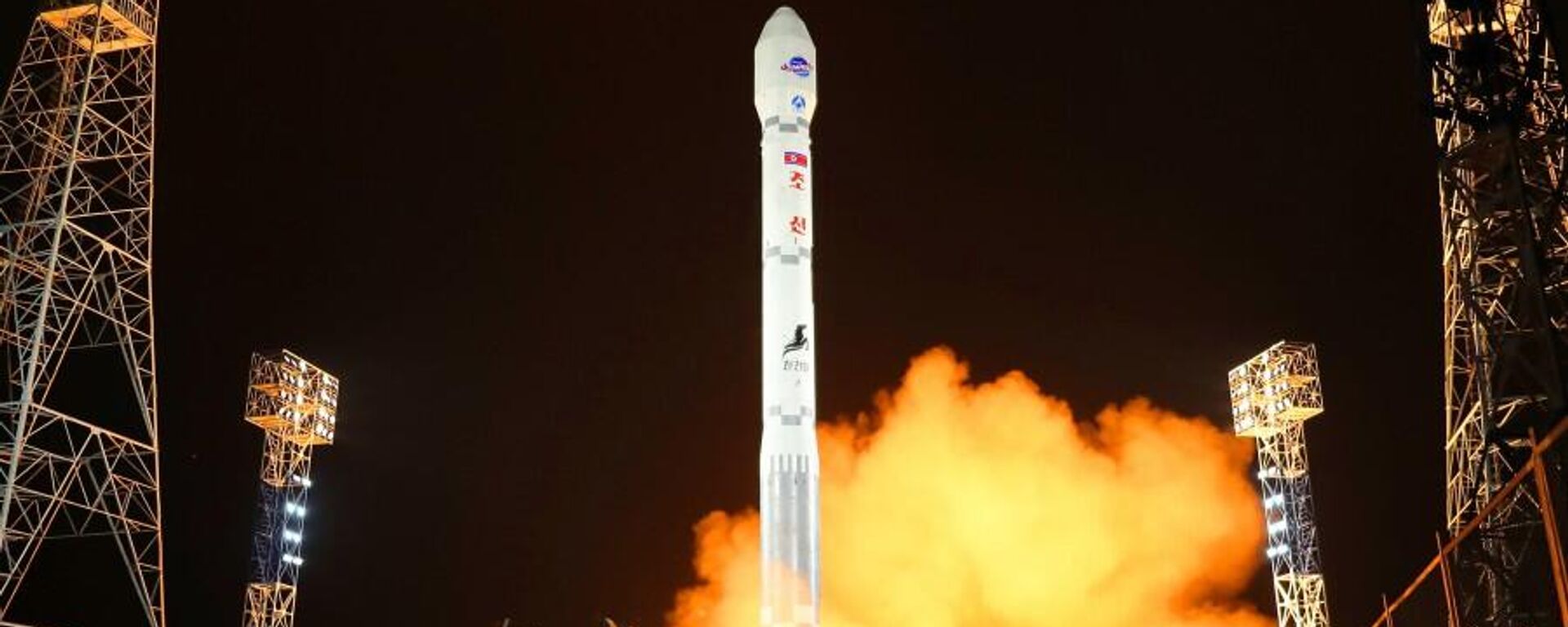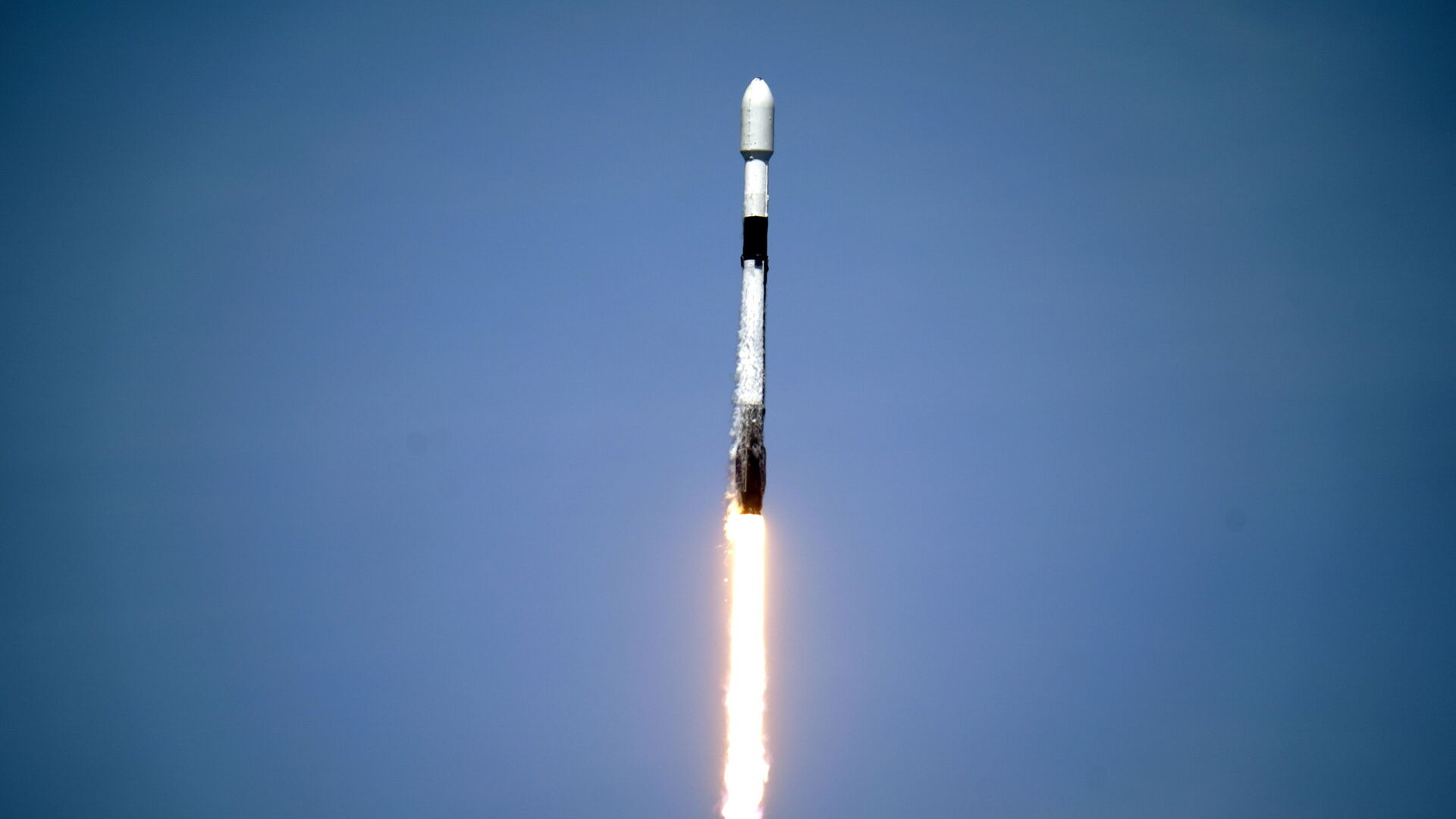https://sputnikglobe.com/20231201/second-place-south-korea-puts-first-spy-satellite-in-orbit-following-norths-launch-1115337358.html
Second Place: South Korea Puts First Spy Satellite in Orbit Following North’s Launch
Second Place: South Korea Puts First Spy Satellite in Orbit Following North’s Launch
Sputnik International
The South Korean Defense Ministry is preparing to place its first reconnaissance satellite in Earth orbit, an official told reporters on Friday. The launch comes just days after the DPRK launched their own spy satellite.
2023-12-01T22:18+0000
2023-12-01T22:18+0000
2023-12-01T22:16+0000
south korea
kim yo jong
spy satellite
north korea
falcon 9
asia
https://cdn1.img.sputnikglobe.com/img/07e5/05/10/1082906406_0:0:3071:1728_1920x0_80_0_0_77dc1fd3fc8bebae21afed075a2a26bb.jpg
The satellite, domestically built, was launched on Friday aboard a SpaceX Falcon 9 rocket from Vandenberg Space Force Base in California.The device is set to orbit between 400 kilometers and 600 kilometers up, and is capable of detecting an object as small as 30 centimeters, according to South Korean media. Seoul plans to launch four more devices by the end of 2025.While the South has "succeeded in the launch of a military communications satellite, it has taken much longer for a reconnaissance satellite due to higher technological hurdles," he said.Choi added that after the North launched its own satellite last month, "the South Korean government needs to demonstrate it can also pull this off.”However, a key difference is that while South Korea has had to use an American rocket to launch its satellite, due to limitations on its ballistic missile program put in place by Washington, the DPRK used its own rocket.Moscow-based military expert Alexey Leonkov told Sputnik earlier this week that this had made the DPRK “a member of the club of space powers,” an elite group of spacefaring nations to which South Korea could only “conditionally” be included.Called Malligyong-1, the satellite was launched on November 21 on a Chollima-1 carrier rocket from the Sohae Satellite Space Launching Station on the country’s western coast. According to observers, the rocket bore a resemblance to the Soviet Union’s Zenit rocket. However, the United States accused Pyongyang of using the launch as an excuse to advance its ballistic missile program, which the United Nations has sanctioned, claiming they violate the Nuclear Non-Proliferation Treaty (NPT). Pyongyang withdrew from the treaty in 2003.Kim Yo Jong, vice department director of the Central Committee of the DPRK’s ruling Workers' Party of Korea and a key spokesperson for the North Korean government, blasted American hypocrisy in its response to the launch, noting the US has threatened the DPRK with attack since the 1953 ceasefire.The 1950-53 war, which caused widespread devastation across both North and South Korea, only ended in a ceasefire, not a permanent peace treaty, allowing 28,000 US troops to remain in South Korea and for American commanders to retain control over South Korean forces in wartime. Pyongyang has said it needs nuclear weapons and advanced missiles as a deterrent against attack in the absence of peace.
https://sputnikglobe.com/20231124/south-korea-urges-us-to-boost-defense-cooperation-after-norths-satellite-launch-1115187331.html
https://sputnikglobe.com/20231127/north-korea-launches-satellite-to-keep-up-with-us-military-moves---un-envoy--1115238712.html
south korea
north korea
Sputnik International
feedback@sputniknews.com
+74956456601
MIA „Rossiya Segodnya“
2023
News
en_EN
Sputnik International
feedback@sputniknews.com
+74956456601
MIA „Rossiya Segodnya“
Sputnik International
feedback@sputniknews.com
+74956456601
MIA „Rossiya Segodnya“
south korea spy satellite, does south korea have satellites, dprk satellite launch
south korea spy satellite, does south korea have satellites, dprk satellite launch
Second Place: South Korea Puts First Spy Satellite in Orbit Following North’s Launch
The South Korean Defense Ministry is preparing to place its first reconnaissance satellite in Earth's orbit, an official told reporters on Friday. The launch comes just days after the Democratic People’s Republic of Korea (DPRK), their rivals to the north, launched their own spy satellite.
The satellite, domestically built, was launched on Friday aboard a SpaceX Falcon 9 rocket from Vandenberg Space Force Base in California.
The device is set to orbit between 400 kilometers and 600 kilometers up, and is capable of detecting an object as small as 30 centimeters, according to South Korean media. Seoul plans to launch four more devices by the end of 2025.
"Until now, South Korea has relied heavily on US-run spy satellites" when it comes to monitoring the DPRK, Choi Gi-il, professor of military studies at Sangji University in Wonju, told French media.
While the South has "succeeded in the launch of a military communications satellite, it has taken much longer for a reconnaissance satellite due to higher technological hurdles," he said.

24 November 2023, 11:47 GMT
Choi added that after the North launched its own satellite last month, "the South Korean government needs to demonstrate it can also pull this off.”
However, a key difference is that while South Korea has had to use an American rocket to launch its satellite, due to limitations on its ballistic missile program put in place by Washington, the DPRK used its own rocket.
Moscow-based military expert Alexey Leonkov told Sputnik earlier this week that this had made the DPRK “a member of the club of space powers,” an elite group of spacefaring nations to which South Korea could only “conditionally” be included.
“South Korea most likely belongs to the states that do not have their own spaceports and use the services of spaceports of other states. And after the launch of such a satellite, North Korea entered not just the club of space powers, but the club of those powers that have military reconnaissance satellites,” he said.
Called Malligyong-1, the satellite was
launched on November 21 on a Chollima-1 carrier rocket from the Sohae Satellite Space Launching Station on the country’s western coast.
According to observers, the rocket bore a resemblance to the Soviet Union’s Zenit rocket. However, the United States accused Pyongyang of using the launch as an excuse to advance its ballistic missile program, which the United Nations has sanctioned, claiming they violate the Nuclear Non-Proliferation Treaty (NPT). Pyongyang withdrew from the treaty in 2003.
To test out the new satellite, the DPRK photographed key military and command sites in the US and its allies, including the White House and bases in Virginia, Japan, and elsewhere.
Kim Yo Jong, vice department director of the Central Committee of the DPRK’s ruling Workers' Party of Korea and a key spokesperson for the North Korean government,
blasted American hypocrisy in its response to the launch, noting the US has threatened the DPRK with attack since the 1953 ceasefire.

27 November 2023, 17:06 GMT
“The whole course of the open meeting of the UNSC over the DPRK's reconnaissance satellite launch, convened at the gangster-like demand of the US and its followers, clearly proves how weak, false and absurd are the unreasonable arguments of some UN member states denying the DPRK's sovereign rights,” Kim said on Wednesday.
The 1950-53 war, which caused widespread devastation across both North and South Korea,
only ended in a ceasefire, not a permanent peace treaty, allowing 28,000 US troops to remain in South Korea and for American commanders to retain control over South Korean forces in wartime. Pyongyang has said it needs nuclear weapons and advanced missiles as a deterrent against attack in the absence of peace.






